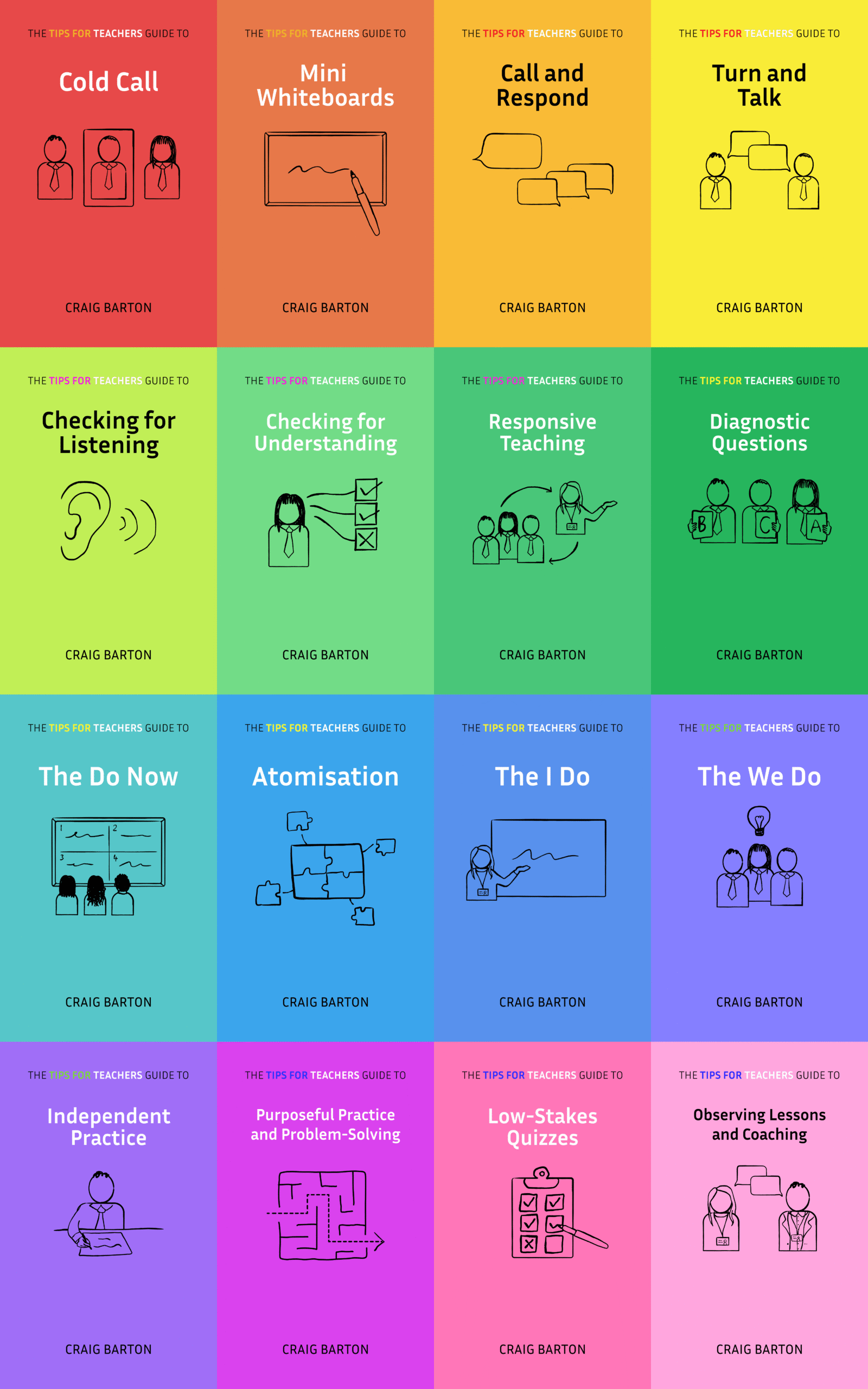
If there’s one thing education is not short of, it is ideas to try. You only need to venture onto Twitter/X for a few moments, and so long as you can avoid the spats about mobile phones, silent corridors and detentions, you will encounter an idea from a fellow educator. Then there’s the abundance of blogs, books, podcasts and newsletters, all crammed with suggestions, not to mention any CPD opportunities you may be lucky enough to attend.
Diagnosis
- How do you choose which new ideas to focus on?
- What challenges do you face?
Evidence
The problem with new ideas is two-fold.
- We only have a finite amount of time in and out of lessons to try them out.
- To determine if any change we have tried has been effective, it is sensible to try only one idea at a time so we can control the other variables.
So, with an abundance of ideas and these two constraints, how should we proceed?
Solution steps
Here is a framework I share with colleagues in my CPD sessions. I recommend you try it when considering the ideas on this website and when you encounter a new idea in the wild.
To begin with, get a piece of paper.
Two key variables
Start by drawing a set of axes with these two labels:

Likely impact on learning
This will give you a sense of how effective you believe this idea will be. It is a measure of the potential benefit of trying it out.
How closely this matches with what I currently do
This will give you a sense of whether implementing this idea will require a significant change to your practice, a tweak, or barely any change. It is a measure of the effort required to try out the new idea.
Top-right: Can I do it more?

Ideas you encounter that sit in the top-right of the graph are those that you believe have a significant, positive impact on your students’ learning and that you are already implementing. There is a danger that we think no further about such ideas because we already do them. I think a better approach is to ask yourself: Can I do it more?
- If I use this idea with one class at a certain stage of the lesson, can I do it more than once in the lesson?
- If I use it with one class, can I do it with more classes?
If you have found something that works, squeeze the life out of it!
Bottom-right: Can I do it better?

Here, we have an idea that you are currently implementing, but it is not having the positive effect on learning that either you hoped it would have or that the communicator of the idea suggests that it should. The question to ask here is: Can I do it better?
- Could you implement the idea differently?
- Does it need a reboot with your students?
- Do you need to try it with a different class to find out what really makes it work?
- Do you need to ask someone who also uses this idea exactly how they put it into practice?
Bottom-left: Why?

Here, we have an idea that you are not doing and which you do not believe will positively impact your students’ learning. The temptation here – for me, anyway – is to dismiss the idea and move on. I think a better approach is to ask: Why?
- Why do I not use this idea?
- Am I sure it would not work with my students, or in my subject?
- Does it go against my core beliefs as a teacher?
- Are the practical barriers to implementing it really too high?
- Why do I believe it will not lead to more learning?
- Have any of my colleagues made it work?
Considering all this, you might still feel this idea is not for you. But I think it is worth pausing to ask the question.
Top-left: What would I need to change to make this work?

Here, we have an idea that you do not currently do but which excites you. You can see its potential impact on your students’ learning, so you want to build it into your practice. The question to ask yourself is: What would I need to change to make this work?
That change could come in two different places. It may require changing some aspects of the idea to make it more suited to your subject, students or teaching style. Or, it may require changing what you currently do in the classroom to make room for the new idea.
Where to begin?

If you encounter just one idea, this framework is useful for helping you consider its effectiveness and the effort required. But what about when you read a book or attend a CPD session and come away with many ideas?
First, to repeat what I said above, I recommend restricting yourself to trying one idea at a time. And give yourself the best chance of success. Try it with a class with whom you have a good relationship, who accept change, and for whom it is not a disaster if the idea does not work out.
Then go for something like this:
- Start with ideas in the top right first. Implementing these ideas more will require the least effort and should lead to some positive outcomes with minimal effort.
- Next, work through the ideas in the bottom-right. Again, you are already doing these, so hopefully, you can find a tweak or adaptation to make them even more effective.
- Finally, turn your attention to the ideas in the top left. These will require a more effortful change—either to the idea itself or your teaching practice—but the rewards could be big!
Want to know more?
- This research paper warns of the dangers of trying out more than one idea at once
- Sarah Cottingham shares her advice on how to decide which ideas to try first here








